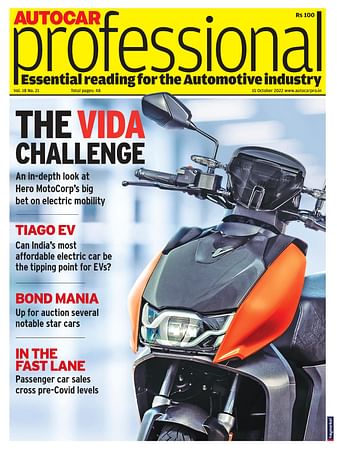Harman announces 5G-ready antennas for automotive applications
Apart from hosting multiple radio services, the antenna is also expected to support vehicle to vehicle and vehicle to infrastructure safety solutions.
US-based Harman International, a wholly-owned subsidiary of Samsung Electronics, focused on connected technologies for automotive, consumer and enterprise markets, recently announced the launch of its all-new 5G-ready multiband conformal antennas for automotive applications, which combine multiple antennas in one module that can be mounted below a vehicle’s body panels.
Through the conventional methods, a modern, connected car could require as many as 18 antennas to provide all relevant services for consumers, which causes extensive design and aesthetic challenges for automakers that want to keep their products connected, but still streamlined and attractive. Harman has confirmed that their multiband conformal antennas are designed to address these challenges.
“Up until now, automakers have typically employed a “shark fin” antenna in combination with a variety of other antennas distributed around the vehicle. In the era of pervasively connected cars, this layout is no longer viable for designers,” said Vishnu Sundaram, vice president, telematics business unit, Harman connected car. Harman’s multiband conformal antennas, derived from Samsung’s experience in mobile antenna design have the ability to accommodate a variety of modern radio services, including LTE, GNSS, V2X, WiFi, Bluetooth, RKE and Electronic toll collection (ETC). The antennas are mounted into an aperture opening in a vehicle’s body panel – typically the roof area or rear deck – and are covered by a waterproof, non-conductive radome. It is supposed to provide gain, and directionality, while delivering performance and the required isolation for many radio systems to operate together.
Sundaram adds, “We’re currently evaluating the antennas with several premium automakers to validate the design for each specific vehicle and expect to see the conformal antennas available for the model year 2021 vehicles.”
Harman also claims that apart from streamlining radio services, the multiband conformal antennas can be combined in an integrated package with its Telematics Control Unit (TCU) to become a “smart antenna.” This 5G-ready technology will help automakers keep up with the pace of innovation in the telecommunications sector so that drivers of the cars of today, tomorrow, and the future can be untethered and constantly connected. Sundaram has confirmed that it also supports vehicle-to-vehicle and vehicle-to-infrastructure safety solutions that will become standard features as cars become increasingly connected to their surroundings.
Also read:
Samsung: how it plans to develop world-leading autonomous car tech
RELATED ARTICLES
Sept 2024 From R&D incentives to EV infrastructure: What auto components industry expects from Budget 2024
Sept 2024 From R&D incentives to EV infrastructure: What auto components industry expects from Budget 2024
US car majors hit the brakes on driverless cars
Ford Motor and Volkswagen to close self-driving startup Argo AI, due to lack of technology and clear regulations.
Autoliv and Geely to develop advanced safety tech for future vehicles
Scope of cooperation includes safety for high-level autonomous driving, intelligent steering wheel technology, a 360deg ...






 By Autocar Pro News Desk
By Autocar Pro News Desk
 12 Jun 2018
12 Jun 2018
 5399 Views
5399 Views









